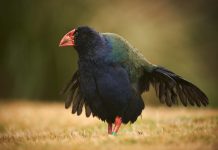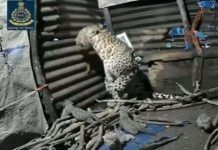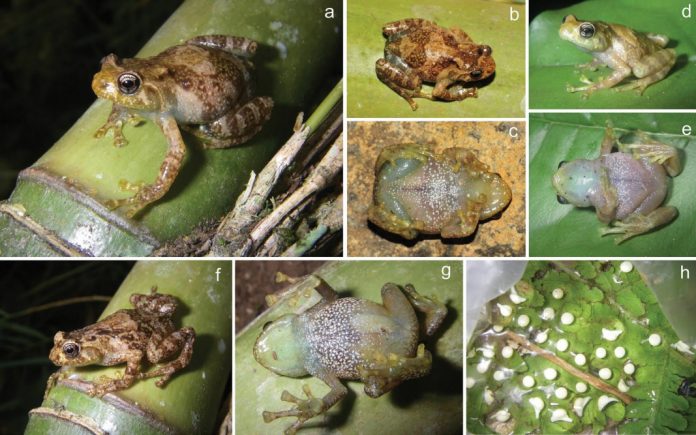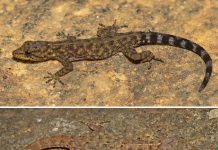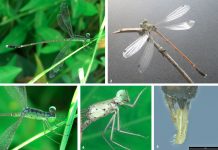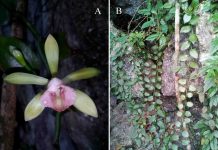Scientists described new Frogs of the genus Platypelis from the Sorata massif in northern Madagascar. The research was conducted by Andolalao Rakotoarison, Mark D. Scherz, Jörn Köhler, Fanomezana M. Ratsoavina, Oliver Hawlitschek, Steven Megson, Miguel Vences, and Frank Glaw. The study was published in Zoosystematics and Evolution on 05th June 2020.
This study adds a new species from northern Madagascar to the genus Platypelis and demonstrates that one third (5 of 16) of described Platypelis species and one undescribed candidate species (P. sp. Ca12) occur at higher elevations in the Sorata massif, plus another candidate (P. sp. Ca13) from the adjacent Andravory massif. This makes this massif a hotspot for Platypelis species diversity.
Before this study, 15 species are recognized in the genus Platypelis. Additionally, several candidate species have previously been identified.
In 2012, the team conducted fieldwork on the rather remote massif of Sorata in the north of Madagascar. This massif rises from foothills at 400 m a.s.l. to nearly 1800 m a.s.l. and represents the northernmost end of the mountain escarpment that stretches southeast from Tsaratanana (comprising Madagascar’s highest peak, Maromokotro, at 2876 m a.s.l.) toward the Antongil Bay, turning south-southwest in the area of Makira to form the mountain chain that runs the length of Madagascar’s east coast. This fieldwork yielded a large number of new species from other taxa that have already been described elsewhere.
The newly described Platypelis laetus sp. nov. can be distinguished from P. grandis and P. alticola by smaller body size (verified adult male SVL 24.3–25.6 mm vs 30–105 mm), and furthermore from P. grandis by a largely smooth dorsal skin (vs strongly granular and bumpy) and from P. tuberifera by dark pattern on the dorsum (vs uniformly beige-yellowish) and body not conspicuously flattened (vs flattened); from P. pollicaris by a slightly smaller body size (verified adult male SVL 24.3–25.6 mm vs 26–28 mm), third toe shorter than fifth (vs both toes of similar length) and less elongated body (vs conspicuously elongated); from P. tuberifera and P. cowanii by smaller body size (verified adult male SVL 24.3–25.6 mm vs 30–40 mm) and by third toe shorter than fifth (vs third toe longer than fifth); from P. tsaratananaensis by having a plump body (vs slender with a distinctively elongated “neck” region), absence of vomerine teeth (vs presence), and especially in call structure (see below); from P. tetra, P. barbouri, P. karenae, P. ravus, and P. ando by larger body size (SVL 24.3–25.6 mm vs 16–19 mm); from P. milloti by throat greenish colored (vs brownish) and by absence of red ventral color and of a very distinct dorsal pattern (vs presence); from P. barbouri and P. ranjomena by the absence of red color on ventral side or limbs (vs presence); from P. mavomavo by third toe shorter than fifth (vs third toe longer than fifth) and grayish with white spots on the chest (vs uniformly yellow on venter). Among the described species of Platypelis, the new species is phylogenetically closest to P. olgae. It differs from this species by larger body size (adult male SVL 24.3–25.6 mm vs 20.3–21.9 mm), and by third toe often shorter than fifth (vs third toe equal to or longer than fifth).
The research team also provides new records of Platypelis alticola and P. tsaratananaensis from the Sorata Massif, supported by molecular analysis. This confirms a wider distribution of these two species that previously considered to be endemic to the Tsaratanana Massif. However, their populations in Sorata were characterized by a certain degree of genetic differentiation from Tsaratanana populations suggesting that they require more detailed taxonomic assessment.
If you are interested to read more on this research, you can find the full research article in here DOI: 10.3897/zse.96.47088
Cover Photo – Photographs in life of Platypelis laetus sp. nov. from the Sorata massif: a–c ZSM 5652/2012 (FGZC 3761), holotype; d, e ZSM 5651/2012 (FGZC 3588), paratype; f, g ZSM 5653/2012 (FGZC 3762), paratype; h Eggs and embryos found in the same bamboo hole with the specimens ZSM 5652/2012 and ZSM 5653/2012.





